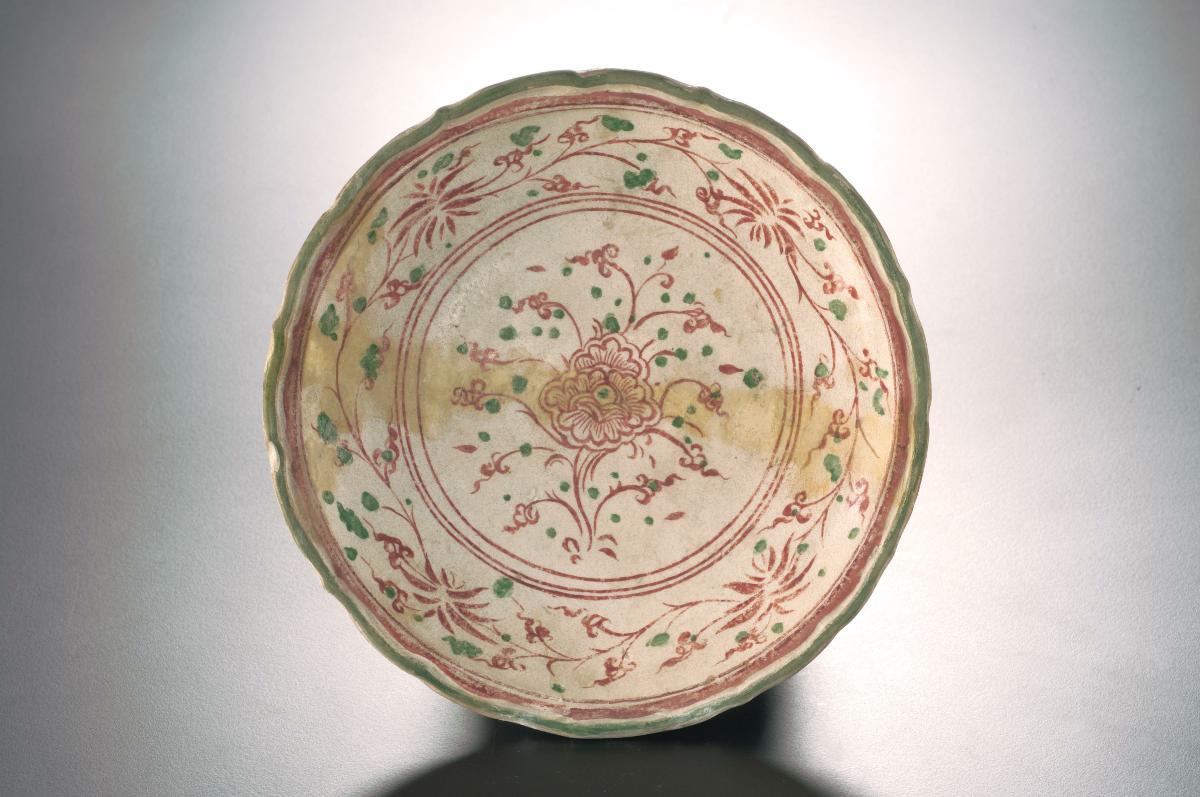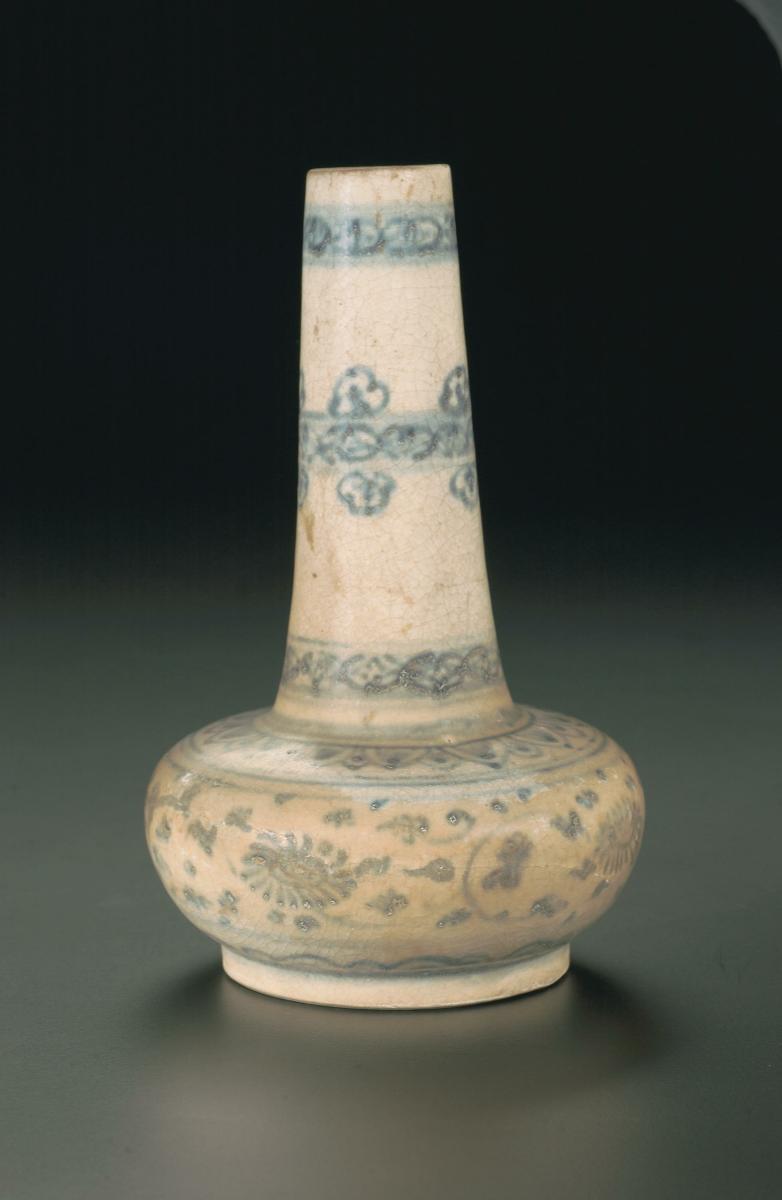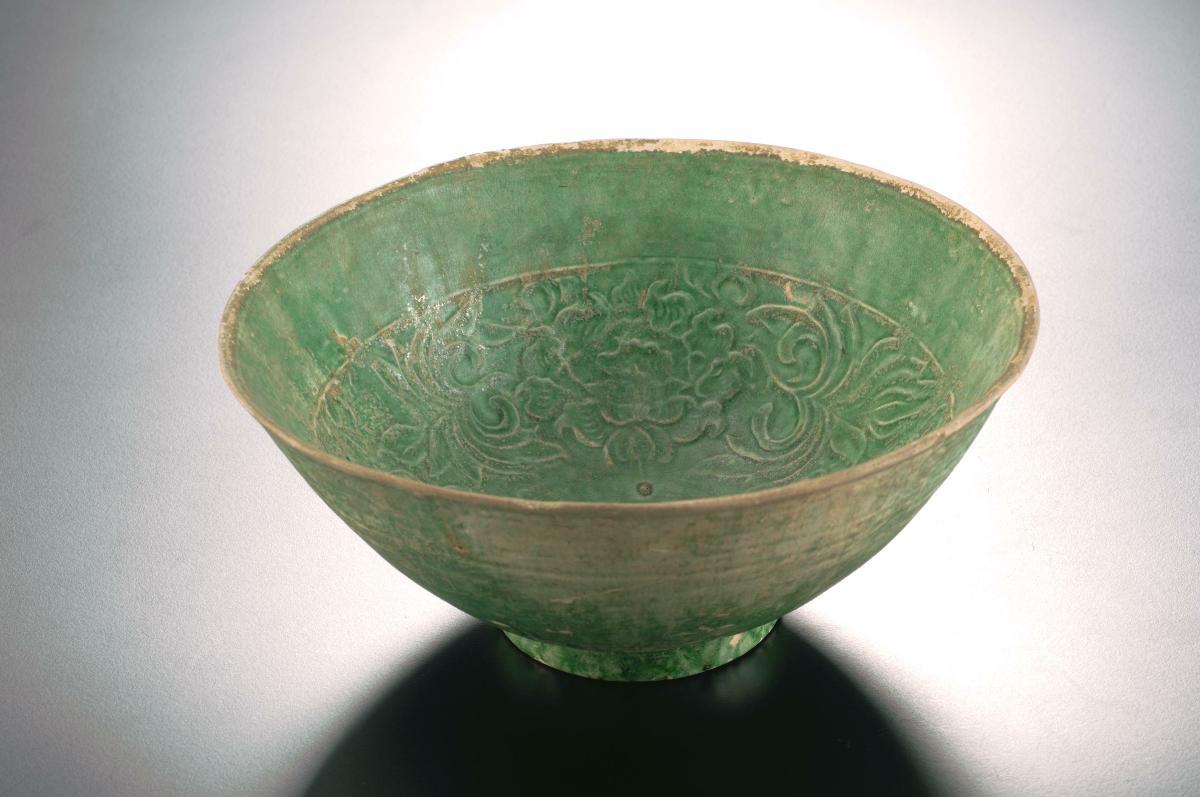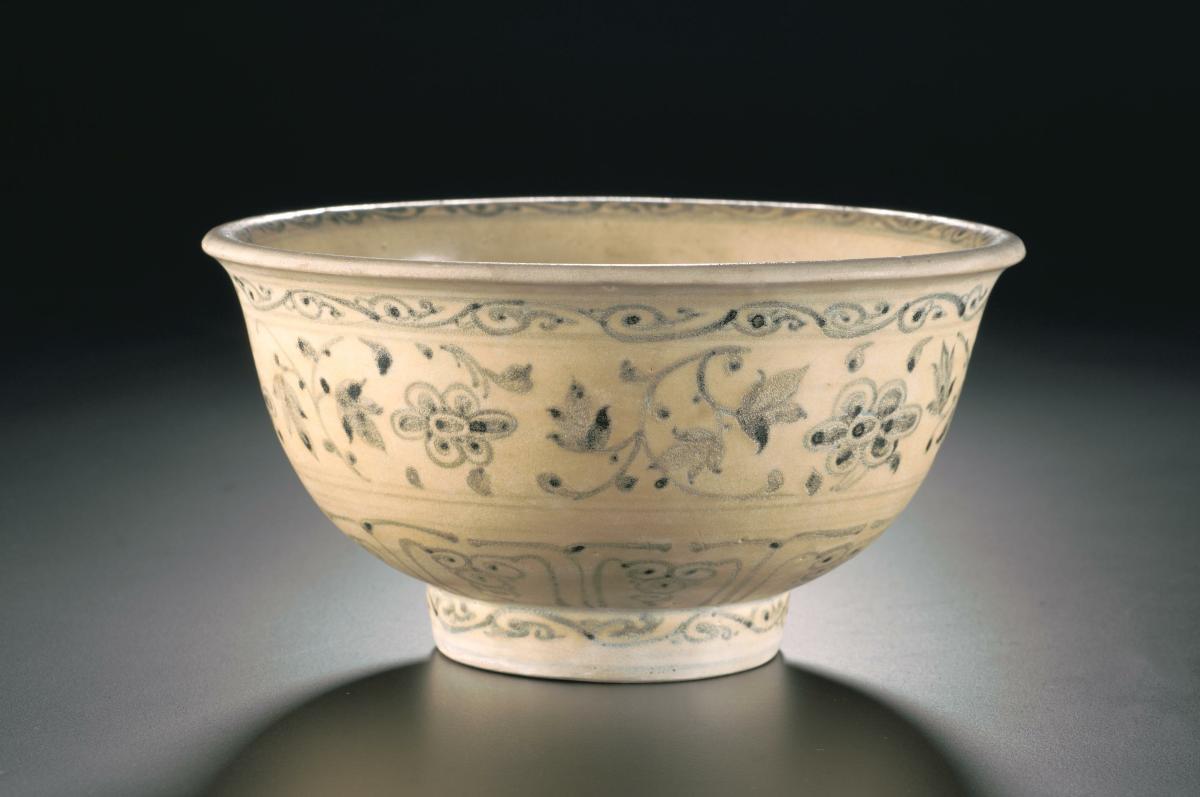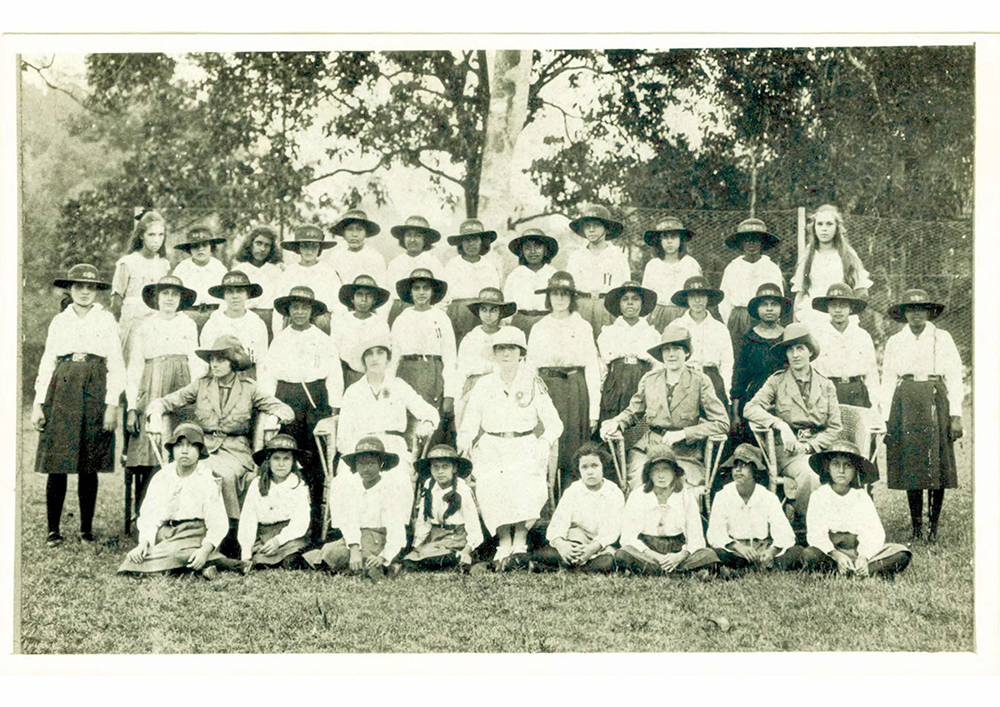This large dish with a scalloped rim is decorated in overglaze red and green enamels with lotus flowers and leaf scrolls around the inner walls and a peony spray in the centre. Red, green and yellow overglaze enamels were used on elaborate Vienamese ceramic wares. The overglaze enamels were used either on their own or in combination with underglaze-cobalt decorations that ranged from landscapes to floral and mythological animal motifs. Although heavily influenced by the Chinese ceramic tradition, Vietnam materials and potting styles are unique. Technically not ‘porcelain’, which is translucent and pure white, these stonewares are different in appearance from Chinese and other Southeast Asian ceramics. Vietnamese wares are typically more heavily potted and have an off-white clay body. Vietnam entered the international trade during the 14th century and produced a large variety of wares for Southeast Asia, particularly Indonesia, the Philippines and Malaysia. The flourishing of Vietnamese national identity was recognisable in the development of art styles as well as in the success of the blue-and-white and polychrome export wares sold to these markets. However, by the 16th century, due to intense competition from the Chinese kilns, the export of Vietnamese wares was greatly reduced.





